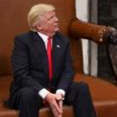-
Posts
15,177 -
Joined
-
Last visited
-
Days Won
48
Content Type
Events
Forums
Downloads
Quizzes
Gallery
Blogs
Everything posted by Will B Good
-
1. Weaponizing Lawfare / Targeting Opponents: “Lock her up” Rhetoric: Trump repeatedly encouraged chants and rhetoric around imprisoning Hillary Clinton during and after the 2016 election. While no charges were filed, it normalized the idea of prosecuting political opponents. Using DOJ to Target Enemies: Former Attorney General William Barr faced scrutiny for appearing to act in Trump’s interests, including efforts to reduce sentences for Trump allies (like Roger Stone) and intervene in cases (like Michael Flynn’s). Example: The House Judiciary Committee and legal scholars raised concerns that DOJ independence was being eroded. Recent 2025 Comments: Trump has promised to appoint a special prosecutor to “go after” Joe Biden, openly suggesting retaliation through legal means — which many legal experts view as political lawfare. 2. Censorship and Press Attacks: Labeling Media “The Enemy of the People”: Trump’s frequent use of this Stalin-era phrase to describe the press is widely regarded as an authoritarian tactic. Result: Chilling effect on journalists, increased threats against reporters, and erosion of trust in independent media. Revoking Press Credentials: His White House revoked access to journalists, like CNN’s Jim Acosta, after confrontational questions — an act later reversed in court as unconstitutional. 3. Undermining Judicial Independence: Public Attacks on Judges: Trump has repeatedly attacked judges who ruled against him, calling them “Obama judges” or “so-called judges.” Example: He criticized Judge Gonzalo Curiel’s Mexican heritage during the Trump University lawsuit, implying bias based on ethnicity. Pressuring the Supreme Court: Trump has suggested that the Supreme Court should intervene in election matters in his favor, undermining judicial neutrality.
-
Well, having read that I now feel I can now give my wholehearted support to everything Trump is trying to achieve......judges should be impeached, universities closed if they don't do as he says and the MSM should be closed down for all the lies they keep feeding us. I'm almost tempted to go and inject myself with bleach.
-

Trump has finally met his match as he fights 3 unwinnable wars
Will B Good replied to simple1's topic in Political Soapbox
So read Putin for Cameroni and Trump for the Filipino gf? -

Trump has finally met his match as he fights 3 unwinnable wars
Will B Good replied to simple1's topic in Political Soapbox
Bit like you did with your Filipino gf?- 93 replies
-
- 10
-

-

-
'Tried' as in he gave in to Putin and offered to give up half of Ukraine to him....pure genius.
- 168 replies
-
- 11
-

-

-

-

-

-

-

A true story about an old pal of mine.
Will B Good replied to Don Giovanni's topic in ASEAN NOW Community Pub
Haven't been on here for sometime......is this Bob or Colin who's posting?



